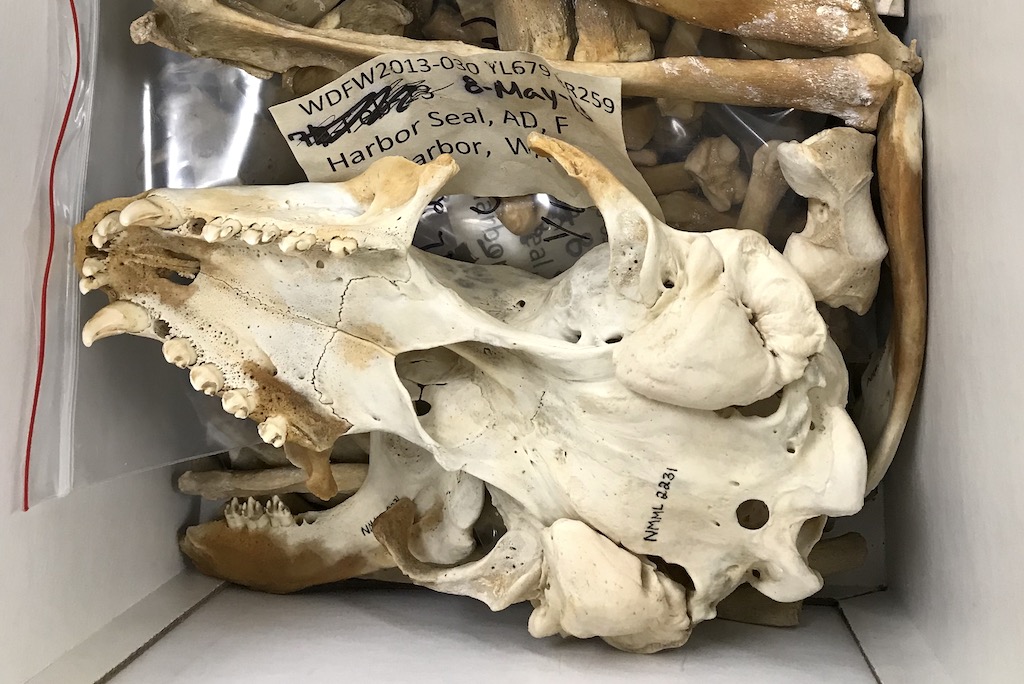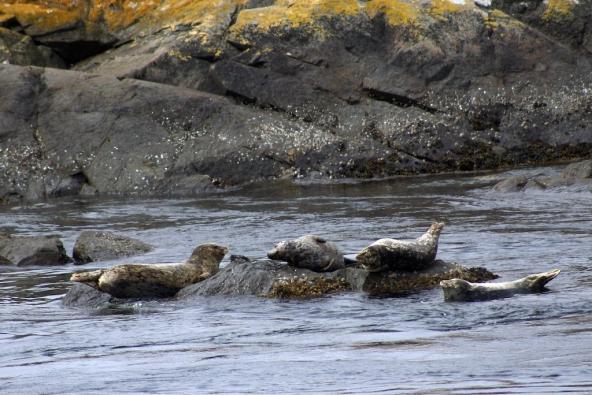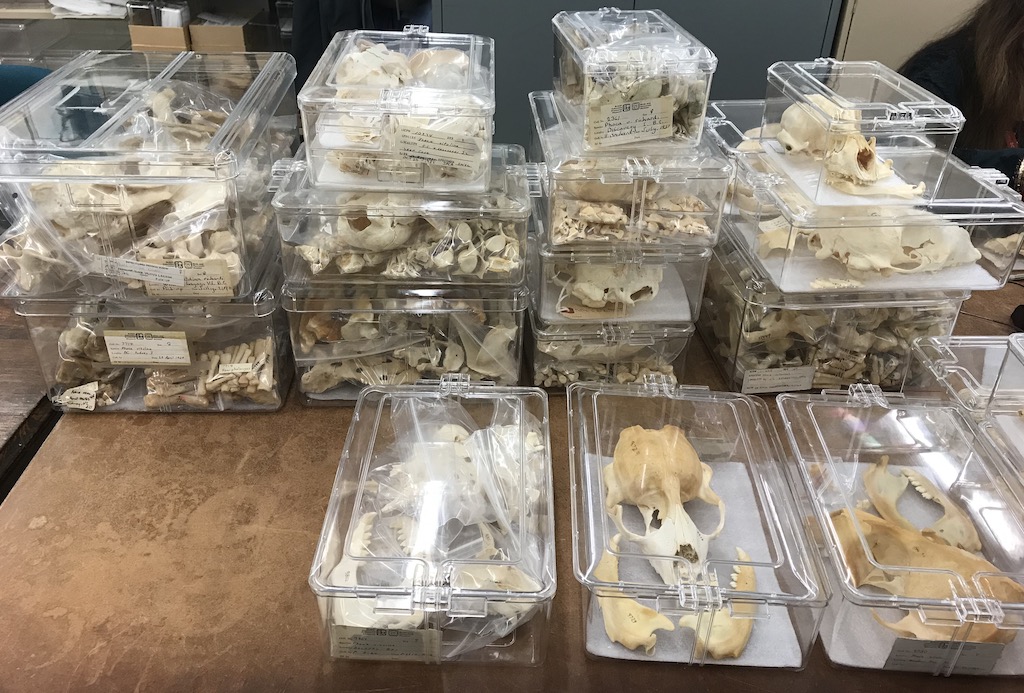These methods don’t provide direct evidence of the specific prey species eaten by seals, but they reveal an average trophic level of the various prey species. Feddern has learned that harbor seals living along the Pacific Coast are generally eating higher on the food web than seals in Puget Sound. The finding seems to hold true throughout the study period.
“Those on the coast could be eating different species or just more adults in general,” Feddern said, noting that adults of a species often shift to consuming higher-level species as they grow larger. Since adult fish are higher on the food web than juvenile fish, seals eating more adults would move up the food web.
A greater number of young salmon (smolts) living in Puget Sound before migrating to the coast could explain the lower trophic position for Puget Sound seals versus those on the coast, she said.
The new trophic findings for seals seem to align with historical records going back to the 1970s that show yearly estimates for the abundance of prey— primarily herring, hake and young salmon, she said.
“They seem to eat what is available,” Feddern noted, which fits the well-known description of seals as “opportunistic feeders” and raising this important question: Would seals today eat less salmon if more herring or hake were available?
During the 1980s, when hatcheries were producing excess baby salmon, Feddern’s data suggest that seals were feeding at a lower trophic level, as one might expect.
If the abundance of species is driven by environmental conditions, including long-term cycles like the Pacific decadal oscillation, then future cycles influenced by climate change could play a major role in the entire food web, she said.
“When the PDO is positive (less productive), the harbor seals are feeding lower on the food web,” she said, explaining that the relative amount of food declines more at higher trophic levels when overall productivity goes down.
No significant differences in trophic level were seen between male and female harbor seals at any time during the study, although other studies suggest that females may be feeding closer to shore and consuming different prey. Nor did the size of the animals show a notable difference when it comes to what they were eating.
Feddern is preparing two research articles for publication, one about the effects of ocean conditions on the food web, the other about historical changes in the diets of harbor seals. Meanwhile, stable-isotope studies continue in the Holtgrieve lab to complete a picture of the food web by filling in the blanks for other marine species.





